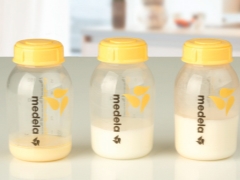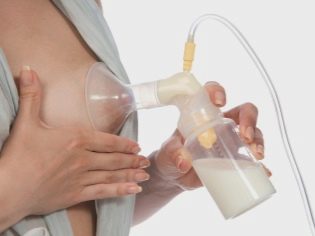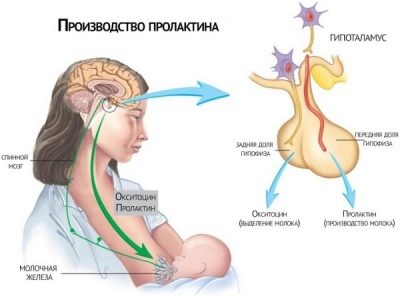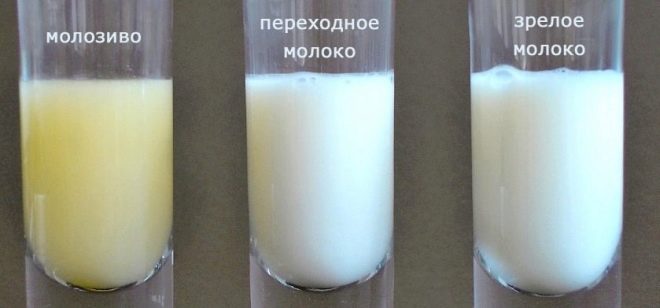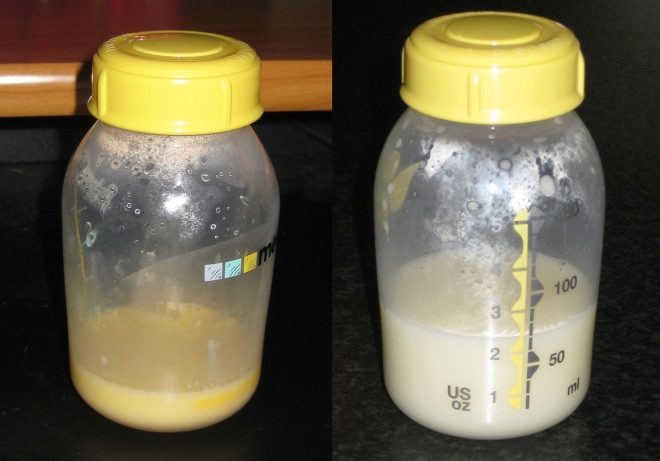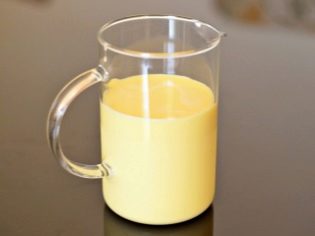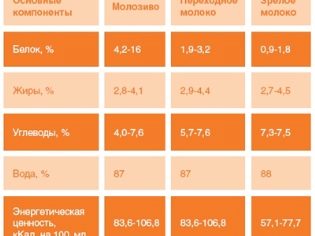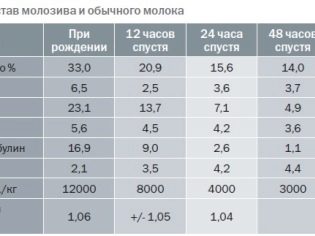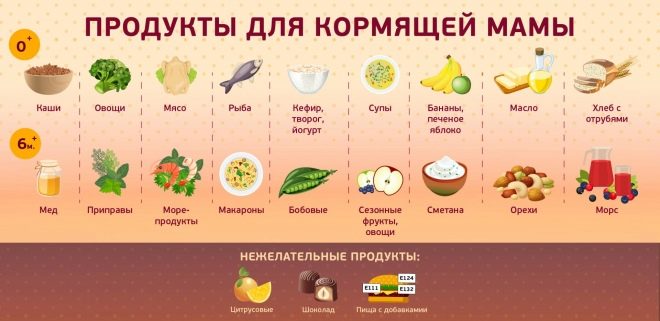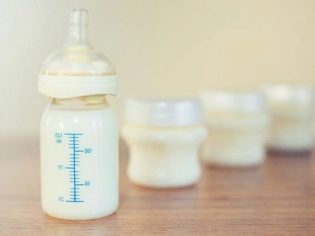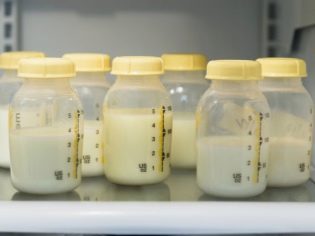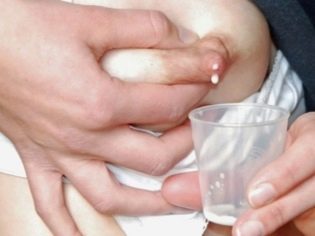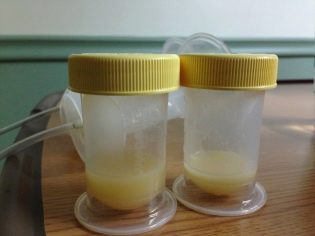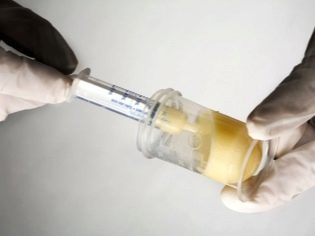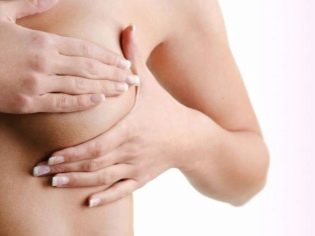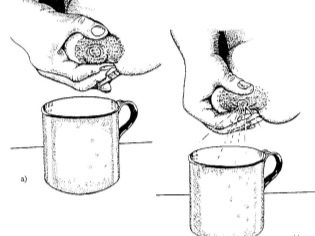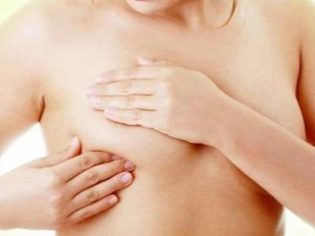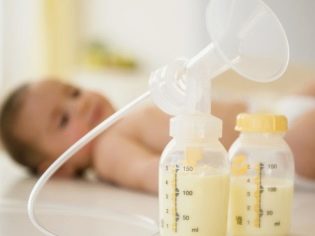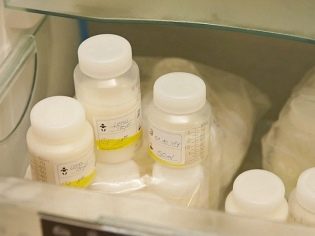Colostrum: features and properties
After the baby is born, you need to feed it. The best "dish" for a newborn baby is considered mom's colostrum. It perfectly nourishes the children's body with all the necessary components. This article will tell about the features and properties of this unique product.
What it is?
From a biological point of view, colostrum is a special secret that is formed in the mammary glands of a woman who has just given birth. In order for the colostrum in the female body to appear, a certain change in the hormonal level is required. Such specific changes are necessary for the start of lactation, and they begin to occur in the body during pregnancy.
Preparation of the mammary glands for the synthesis of colostrum, and later breast milk, occurs with the appearance of specific hormones in the female body. One of the most important of these is prolactin. It appears in the female body at a late period of pregnancy, its number is rapidly increasing after the first application of the child to the mother’s breast.
During breastfeeding, the child touches the mother's nipple with the lips, which leads to irritation of the nerve endings, which are in large numbers in the alveolar zone of the breast. This contributes to the fact that the nervous impulse is rapidly growing and enters the brain. The pituitary gland is activated there, and it releases prolactin into the blood. This hormone, in turn, has an effect on the breast ducts, along which the nutrient secretion is released.
Interestingly, the level of prolactin is slightly higher in the morning and night hours. This fact can be taken into account and tried to put into practice, especially in the first days after the birth of a child, when he is still not actively applied to the breast.
During natural childbirth, oxytocin is also released in the female body. This feature is conceived by nature is not accidental. Under the influence of oxytocin, there is an active contraction of the uterus, as well as the pectoral muscles. These changes in many ways and contribute to the fact that the woman who just gave birth has a nourishing chest secret.
When does it appear?
Doctors believe that colostrum begins to be synthesized in the mammary glands in the very last days of pregnancy. However, its number increases only after childbirth. Colostrum is usually stored for 3-5 days, and then gradually passes into mature milk.
All women who gave birth have colostrum in different ways. Someone it appears already in the period of pregnancy, and someone complains that even in the first days after birth, it almost was not.
The appearance of colostrum in the female breast depends on a huge number of a variety of reasons. These include: hormonal features during pregnancy, the presence of any gynecological diseases in a woman, and even the method of delivery. In some cases, the “arrival” of nourishing chest fluid is slightly delayed in women who gave birth to their babies much earlier than the prescribed period.
Women who underwent a cesarean section to deliver their babies can also have similar problems with the "arrival" of colostrum immediately after delivery.
What does it look like?
The appearance of colostrum is quite different from mature milk. By its chemical structure, it is close to blood. The very first portion of this nutritional feed for newborn babies can even be bloody. In the future, the chemical composition of the chest fluid will gradually change.
Its proximity to the composition of blood is not accidental. During pregnancy, the baby received all the necessary nutrients for its growth and development through mom's blood vessels. After birth, this mechanism is interrupted. In order for the baby's digestive system to begin to fully function, it takes a certain amount of time. Colostrum in this case helps to gradually prepare the child’s gastrointestinal tract for its upcoming “work”.
Scientists believe that The appearance of colostrum is a unique evolutionary phenomenon that is necessary for a child to transition from parenteral nutrition to breastfeeding.
Usually colostrum looks like a yellowish liquid. Its color can be different. In some women, colostrum may even be beige. The color of the nourishing chest fluid is very individual.
Chemical properties and calories
Colostrum is a liquid that is quite thick and even sticky. Such features are due to the specific chemical composition of this product.
Colostrum can be divided into 2 fractions - liquid and nutrient. The water content in the liquid fraction is very poor. That is why colostrum looks like a thick substance.
A small amount of fluid in the composition of the nutrient secretion of the mammary glands prevents the kidneys of the child from severe overload in the first days after his birth.
Colostrum contains all the important nutritional components necessary for feeding the child in the first days after his birth. So, it contains proteins that are easily digested. In general, protein fractions are albumin and globulins. Casein in nutritious breast secretion is quite small.
It also contains a moderate amount of emulsified fat. In this form, they are easier absorbed by the child's body. Fats are extremely important for the children's body, especially in the first days after its birth. Also colostrum contains lactose and glucose.
In addition to the main nutrients, colostrum also contains a number of essential vitamins and trace elements. So, it contains beta-carotene, zinc, selenium and other necessary biologically active components. Colostrum also has a fairly high content of vitamin E - an important substance involved in the maintenance of cellular immunity. It is important to note that these values are averaged. The nutrient content of colostrum varies for all women.
Scientists have calculated the ratio of the main nutrient nutrients that are contained in colostrum. This ratio is presented in the table below.
Indicator | Content (calculation per 100 grams of colostrum) |
Squirrels | 16.18 g |
Fat | 5.62 g |
Carbohydrates | 12.57 g |
Calorie content | 169, 57 kcal (or 709 kJ) |
This is influenced by a number of factors, including the diet of the nursing mother.
How can you tell from milk?
Colostrum differs from mature milk in basic physicochemical properties. So, it is thicker and more bulky. The content of nutritional components of colostrum significantly exceeds mature milk.
The caloric content of colostrum is significantly different from milk, which appears several days after delivery. It is almost two times higher than milk. The ratio of proteins, fats and carbohydrates in mature milk is also different.
Benefit
The beneficial properties of colostrum cannot be overemphasized.It helps the child's body to gradually adapt to new environmental conditions.
Such an adaptation is simply necessary for the child, as it prepares him for an independent existence. Functions of colostrum are numerous.
Immunity
Colostrum supports an important immune function in children’s bodies. The intake of colostrum in the first days after the baby was born protects the child’s body from many dangerous pathogens that are in large numbers in the external environment.
The immune function of colostrum is due to the entry into the body of a newborn baby of specific protein molecules - antibodies. They are also called immunoglobulins.
Regular entry into the baby’s blood contributes to the fact that it forms passive immunity to various infections.
The following important immune substances are found in the colostrum of a nursing woman:
- immunoglobulins A;
- lactoferrin;
- macrophages;
- neutrophils;
- lymphocytes.
The abundance of leukocyte cells increases the strength of the immune system. It should be noted that these cells to a greater extent are not subject to destruction in the gastrointestinal tract of the child. They remain in the children's body, are well distributed and can perform the immune function granted by nature.
Scientists have found that in the colostrum of a woman who has just given birth there is a fairly large number of T-lymphocytes. These cells belong to the immune system. They are able to synthesize a very important substance - interferon, which has a strong antiviral activity.
The oligosaccharides and polysaccharides contained in colostrum are involved in providing antibacterial protection of the child's body. They negatively affect pathogenic bacterial cells, preventing them from attaching to healthy cells of the child’s body. In this way, These substances help protect a newborn baby from being infected with bacterial infections.
Interestingly, colostrum also contains special peroxidase enzymes. They are able to have a damaging effect on bacterial cells, leading to their death. Such exposure helps protect the body of a newborn baby from various dangerous infections.
Modern scientific studies confirm the fact that colostrum contains a number of special chemicals that protect the baby from the causative agents of some serious diseases - E. coli, streptococci, clostridia, Vibrio cholerae, Salmonella, rotavirus, respiratory syncytial viruses, Coxsackie viruses and poliomyelitis, enteric viruses , herpes simplex viruses and even fungi of the Candida class.
Participation in the revitalization of the internal organs
Growth factors contained in colostrum help to stimulate the baby’s gastrointestinal tract. Scientists have found that colostrum contains insulin, cortisol, epidermal growth factor type I (IGF - I). These substances have a specific effect on the cellular epithelium of the baby’s gastrointestinal tract, contributing to changes in the work of the digestive organs.
It is noted that colostrum has a laxative effect. This property is very important in the first days after the birth of the child into the world, as it ensures the discharge of meconium (original feces) from the intestinal tract. Meconium after birth remains in the baby’s intestines, but is gradually eliminated. It is possible to improve its elimination from a children's organism by means of colostrum.
Modern studies have shown that colostrum also has a positive effect on the growth of the baby. Scientists believe that growth factors in colostrum contribute to this. They stimulate the synthesis of molecular components within cells, leading to their rapid growth.
Analysis
This laboratory test has now become increasingly common. Analysis of the secretion of the mammary glands allows you to determine its chemical composition.
Usually this study is assigned to women with post-term pregnancy. In this case, instead of colostrum, even in the first days after birth, milk appears from the breast.
Conducting such an analysis allows us to distinguish colostrum from mature breast milk. Assign this examination gynecologists.
How to stimulate the appearance?
The simplest, but effective method that stimulates lactation is frequent attachment of the baby to the mother's breast. Many women start to panic if their babies suck a bad breast. Do not do this. First, any excitement and feelings of the mother can have a bad effect on her general condition, and therefore on the lactation process as a whole. And secondly, the "stay" of colostrum in the mammary glands occurs gradually.
A lot of lactating moms say that in the first couple of days after birth, they experienced big problems with lactation. In the future, gradually the amount of colostrum, and then breast milk increased, and breastfeeding was carried out more effectively.
Doctors say that with the expression of colostrum in the very first days after its appearance is not in a hurry. Such active intervention may contribute to the violation of lactation. It is important to note that the intensity of the "stay" of colostrum in the mammary glands varies. So, in the first days after birth, it may be very small, and then the amount of nutrient fluid increases.
The need for decanting colostrum is better discussed with your doctor. This procedure is prescribed mainly to prevent its excessive stagnation in the thoracic ducts.
Too thick colostrum can cause a number of problems. The most common of these is lactostasis - stagnation of the nutrient fluid in the thoracic ducts. Lactostasis prevention is a very important task during lactation. For this nursing mother is recommended to often put the baby to the breast. Doctors call it "on-demand feeds."
During the breastfeeding should be sure to remember the rules of hygiene. Observe their nursing mother should be strictly. It is important to remember that the child's body in the first days after its birth is quite vulnerable to various infections.
In order to avoid dangerous diseases, a nursing mother must strictly follow all the recommendations for breastfeeding prescribed by her doctors.
How much does a newborn need?
Often moms worry that the amount of colostrum is insignificant. Not worry about it. The nutritional value of colostrum is so high that the baby is pretty well saturated with it.
Properly feed the baby in the first days after birth is very important. For this, doctors recommend applying the newborn baby to the breast more often. The baby is fed up with even a small amount of nutrient colostrum. If the baby ate a little more at a time than he needs, then he immediately regurgitates the excess.
Usually during the first days after birth the number of breastfeeds is 6-8 times during the day. It is possible to stimulate lactation with the help of more frequent attachment of the baby to the breast.
In case of sudden cessation of lactation should be in the first days after birth, you should always consult with an obstetrician-gynecologist. Inadequate intake of nutrients into the children's body in this situation may provoke a deterioration in the general condition of the child. In such a situation, consideration should be given to the need to introduce special nutrient mixes into the baby’s diet.
Sometimes it happens that mommy starts to feel that her breast is “empty.” Very often this is only a subjective opinion. Even if initially it seems that there is no discharge from the breast, it is still necessary to apply the child to it. It often happens that in the process of this, the hormonal background changes in a woman and lactation appears.
Can it be stored at room temperature?
The issue of storing colostrum is very important. Decantation should be carried out only with the permission of the gynecologist. You can perform this procedure with the help of a breast pump or simply with your hands. It is very important to do it smoothly, without sudden movements and jerks. Inaccurate drainage can damage the mammary glands and even provoke the development of mastitis.
Storage methods for expressed colostrum are different. Best of all, it is stored in dishes that have previously been sterilized. Expressed colostrum is undesirable for a long time to store at room temperature. Better to put it in the fridge.
Can be colostrum and freeze. In this case, the collected nutrient fluid is placed in a hermetically sealed bag with a clip, tightly closed and sent to the freezer. On the package you should fix the date and time when the pumping was carried out.
You will learn more about what is colostrum in the following video.
